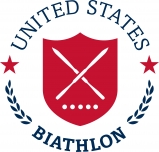The requirements for the design of the Olympic venues are well-documented, and their planning and development closely watched by the IOC and the International Federations (IFs). The IOC and IFs also provide detailed lists of requirements for each of their target groups. However, there is often much less direction for how to provide for successful post-Games venues, possibly because every venue and local community situation is so unique.
When planning and building the Nordic venue for the 2010 Olympic and Paralympic Games in Vancouver, legacy and post-Games success have been a permanent agenda item. From the very beginning, VANOC and the federal and provincial governments have been strongly committed to a successful legacy. A “Trust Fund” was set up early, where over $100 million have already collected interest for several years. These funds will go towards the future operations of four 2010 venues; the Speed Skating Oval, the Sliding venue, the Athletes' Village (a portion that remains as an Athletes' Training Center) and the Nordic venue.
Specifically for the brand new Nordic venue, the so-called Whistler Olympic Park, the initial layout already included not only the Games requirements, but also additional components that might be critical for successful operations in the future. These steps included gathering written feedback from each of the Canadian administrative bodies for the Nordic disciplines outlining their legacy wishes as well as obtaining a commitment from VANOC to build and operate the venue as early as possible to maximize operational experiences and the marketing effect of the Games. To maximize recreational use, additional 35 km of easy and scenic recreational ski trails were built.
VANOC also decided to operate the venue with its own staff (over 40 persons) pre-Games to be able to seamlessly transfer experienced staff, equipment and knowledge to the legacy organization. To market the whole Valley as a “Nordic Mecca” to international and national skiers, a close cooperation with adjacent ski touring operators has been established. Moreover, state-of-the-art equipment was purchased to be left at the venue, such as large grooming machines, permanent refrigeration system for the Ski Jump in-run, electronic biathlon target system, Paralympic shooting and range system. Already during the planning phase, a recreational consultant helped determine public activities for post-Games use, such as show shoe trails, tobogganing/tubing areas and a tree-climbing park, Some staff are already working on planning post-Games operations and business models, and piloting some activities in pre-Games use.
“As with many other Games legacy topics, it is hard to predict the future. The challenges of the Olympic and Paralympic Games will be overcome in time for 2010, but it will take many years before we will know how great the 2010 Games were for the Canadian sports and local communities,” comments John Aalberg, Director, Whistler Olympic Park and of Nordic Sports and adds: “In fact, we already know that building and organizing a venue purely for an edition of the Olympic Games seem much easier than determining how to best operate the venue post-Games.”
Source: FIS



